8 /10 1 Votes
7/10 TV Language(s) English First episode date 1951 Genres Comedy, Sitcom | 8.9/10 IMDb Country United States Home station WMAQ AMNBCCBS | |||||||||||||||||||||||||||||||||
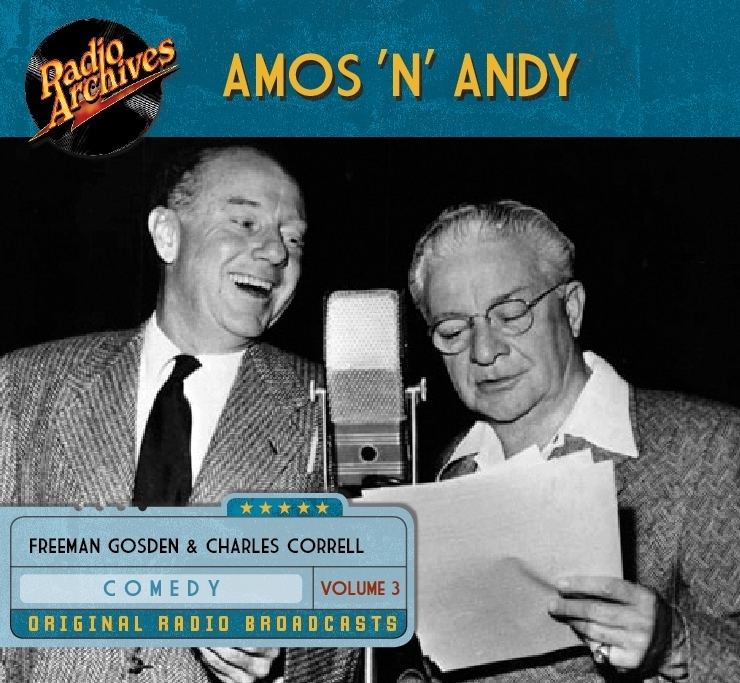 | ||||||||||||||||||||||||||||||||||
Other names The Amos 'n' Andy Show1943–1955Amos 'n' Andy's Music Hall1955–1960 TV adaptations The Amos 'n' Andy Show1951–1953 Starring Charles CorrellFreeman Gosden Cast Similar Burns and Allen, The Jack Benny Program, Calvin and the Colonel, Beulah, Our Miss Brooks | ||||||||||||||||||||||||||||||||||
Amos n andy season 1 episode 15 the kingfish teaches andy to fly
Amos 'n' Andy is an American radio and television sitcom set in Harlem, Manhattan's historic black community. The original radio show, which was popular from 1928 until 1960, was created, written, and voiced by two white actors, Freeman Gosden and Charles Correll, who played a number of different characters, including the titular Amos Jones (Gosden) and Andrew Hogg Brown (Correll).
Contents
- Amos n andy season 1 episode 15 the kingfish teaches andy to fly
- Amos n andy season 1 episode 34 vacation show
- Origins
- Early storylines and characters
- Sponsors
- Controversy and the Pittsburgh Courier protest
- Film
- Television
- Legal status
- Later years
- Later work by cast members
- References
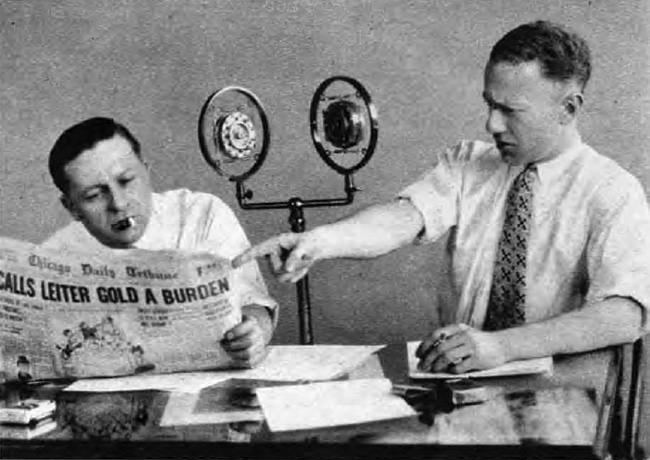
When the show moved to television, black actors took over the majority of the roles; white characters were infrequent. Amos 'n' Andy began as one of the first radio comedy series and originated from station WMAQ in Chicago. After the first broadcast in 1928, the show became a hugely popular radio series. Early episodes were broadcast from the El Mirador Hotel in Palm Springs, California. The show ran as a nightly radio serial (1928–43), as a weekly situation comedy (1943–55), and as a nightly disc-jockey program (1954–60). A television adaptation ran on CBS (1951–53) and continued in syndicated reruns (1954–66). It would not be shown to a nationwide audience again until 2012.
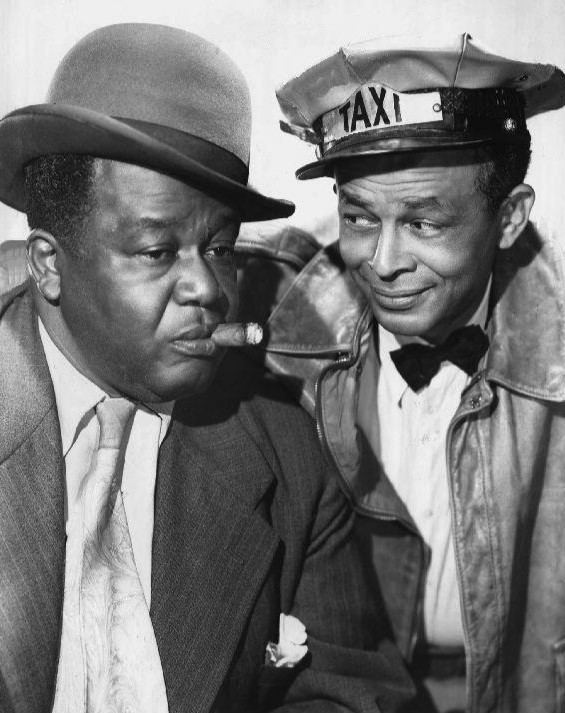
Amos n andy season 1 episode 34 vacation show
Origins

Amos 'n' Andy creators, Gosden and Correll, were white actors familiar with minstrel traditions. They met in Durham, North Carolina, in 1920. Both men had some scattered experience in radio, but it was not until 1925 that the two appeared on Chicago's WQJ. Their appearances soon led to a regular schedule on another Chicago radio station, WEBH, where their only compensation was a free meal. The pair hoped that the radio exposure would lead to stage work; they were able to sell some of their works to local bandleader Paul Ash, which brought them enough name recognition to be offered jobs at the Chicago Tribune's station WGN in 1925. The lucrative offer allowed them to become full-time broadcasters. The Victor Talking Machine Company also offered them a recording contract.

Since the Tribune syndicated Sidney Smith's popular comic strip The Gumps, which had successfully introduced the concept of daily continuity, WGN executive Ben McCanna thought a serialized version would work on radio. He suggested that Gosden and Correll adapt The Gumps for radio. The idea seemed to involve more risk than either Gosden or Correll was willing to take; neither was adept at imitating female voices, which would have been necessary for The Gumps. They were also conscious of having made names for themselves with their previous act. By playing the roles of characters doing dialect, they would be able to conceal their identities enough to be able to return to their old pattern of entertaining if the radio show was a failure.
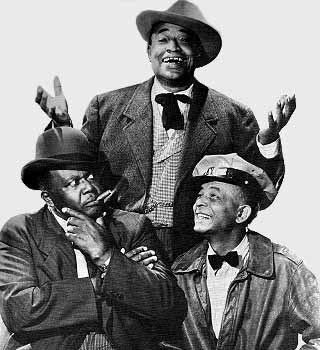
Instead, they proposed a series about "a couple of colored characters", which, nevertheless, borrowed certain elements from The Gumps. Their new show, Sam 'n' Henry, began on January 12, 1926, and fascinated radio listeners throughout the Midwest. It became so popular that, in 1927, Gosden and Correll requested that it be distributed to other stations on phonograph records in a "chainless chain" concept that would have been the first radio syndication. When WGN rejected the proposal, Gosden and Correll quit the show and the station; their last musical program for WGN was announced in the Chicago Daily Tribune on January 29, 1928). Episodes of Sam 'n' Henry continued to be aired until July 14, 1928. Correll's and Gosden's characters contractually belonged to WGN, so, when they left WGN, the pair performed in personal appearances but could not use the character names from the radio show.
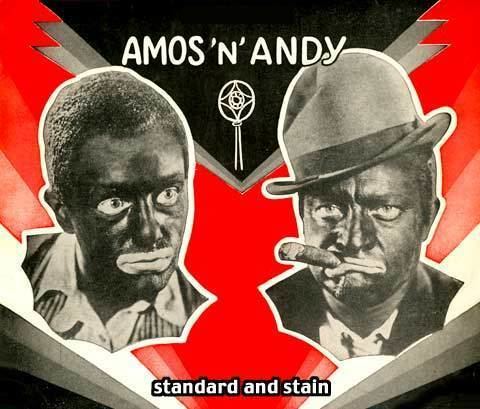
WMAQ, the Chicago Daily News station, hired Gosden and Correll and their former WGN announcer, Bill Hay, to create a series similar to Sam 'n' Henry. They offered higher salaries than WGN and the right to pursue the "chainless chain" syndication idea. The creators later said that they named the characters, Amos and Andy, after hearing two elderly African-Americans greet each other by those names in a Chicago elevator. Amos 'n' Andy began on March 19, 1928 on WMAQ, and prior to airing each program they recorded their show on 78 rpm discs at Marsh Laboratories, operated by electrical recording pioneer Orlando R. Marsh. Early 1930s broadcasts of the show were done from the El Mirador Hotel in Palm Springs, California.
For the program's entire run as a nightly series, Gosden and Correll provided over 170 male voice characterizations in the show's first decade. With the episodic drama and suspense heightened by cliffhanger endings, Amos 'n' Andy reached an ever-expanding radio audience. It was the first radio program to be distributed by syndication in the United States, and, by the end of the syndicated run in August 1929, at least 70 stations besides WMAQ carried recorded episodes.
Early storylines and characters
Amos Jones and Andy Brown worked on a farm near Atlanta, Georgia, and, during the first week's episodes, they made plans to find a better life in Chicago, despite warnings from a friend. With four ham-and-cheese sandwiches and $24, they bought train tickets and headed for Chicago, where they lived in a rooming house on State Street and experienced some rough times before launching their own business, the Fresh Air Taxi Company. (The first car they acquired had no roof; the pair turned it into a selling point.) By 1930, the noted toy maker Louis Marx and Company was offering a tin wind-up version of the auto, with Amos and Andy inside. The toy company produced a special autographed version of the toy as gifts for American leaders, including Herbert Hoover. There was also a book, All About Amos 'n' Andy and Their Creators, in 1929 by Correll and Gosden (reprinted in 2007 and 2008), and a comic strip in the Chicago Daily News.
Naïve but honest Amos was hard-working, and, after his marriage to Ruby Taylor in 1935, a dedicated family man. Blustering Andy was a dreamer with overinflated self-confidence and tended to let Amos do most of the work. Their Mystic Knights of the Sea lodge leader, George "the Kingfish" Stevens, was always either trying to lure the two into get-rich-quick schemes, especially the gullible Andy, or else tricking Andy into some kind of trouble. Other characters included John Augustus "Brother" Crawford, an industrious but long-suffering family man; Henry Van Porter, a social-climbing real estate and insurance salesman; Frederick Montgomery Gwindell, a hard-charging newspaperman; Algonquin J. Calhoun, a somewhat crooked lawyer added to the series in 1949, six years after its conversion to a half-hour situation comedy; William Lewis Taylor, the well-spoken, college-educated father of Amos's fiancée; and Willie "Lightning" Jefferson, a slow-moving Stepin Fetchit–type character. The Kingfish's catchphrase "Holy mackerel!" soon entered the American lexicon.
Of the three central characters, Correll voiced Andy Brown while Gosden voiced both Amos and the Kingfish. The majority of the scenes were dialogues between either Andy and Amos or Andy and Kingfish. Amos and Kingfish rarely appeared together. Since Correll and Gosden voiced virtually all of the parts, the female characters, such as Ruby Taylor, Kingfish's wife Sapphire, and Andy's various girlfriends, did not initially appear as voiced characters, but entered the plots through discussions among the male characters. Prior to 1931, when Madame Queen (then voiced by Gosden) took the witness stand in her breach-of-promise lawsuit against Andy, a feminine voice was heard only once. Beginning in 1935, actresses began voicing the female characters, and, after the program's conversion to a weekly situation-comedy format in 1943, other actors were recruited for some of the supporting male roles. However, Correll and Gosden continued to voice the three central characters on radio until the series ended in 1960.
With the listening audience increasing in spring and summer 1928, the show's success prompted the Pepsodent Company to bring it to the NBC Blue Network on August 19, 1929. At this time the Blue Network, was not heard on stations in the West. Western listeners complained to NBC that they wanted to hear the show. Under a special arrangement, Amos 'n' Andy debuted coast-to-coast November 28, 1929, on NBC's Pacific Orange Network and continued on the Blue. WMAQ was then an affiliate of CBS and its general manager tried, to no avail, to interest that network in picking up the show. At the same time, the serial's central characters — Amos, Andy, and the Kingfish — relocated from Chicago to Harlem. The program was so popular by 1930, that NBC's orders were to only interrupt the broadcast for matters of national importance and SOS calls. Correll and Gosden were making a combined salary of $100,000, which they split three ways to include announcer Bill Hay, who was with them when they started doing radio.
The story arc of Andy's romance (and subsequent problems) with Harlem beautician Madame Queen entranced some 40 million listeners during 1930 and 1931, becoming a national phenomenon. Many of the program's plotlines in this period leaned far more to straight drama than comedy, including the near-death of Amos's fiancee Ruby from pneumonia in the spring of 1931, and Amos's brutal interrogation by police following the murder of cheap hoodlum Jack Dixon that December. Following official protests by the National Association of Chiefs of Police, Correll and Gosden were forced to abandon that storyline – turning the entire sequence into a bad dream, from which Amos gratefully awoke on Christmas Eve.
The innovations introduced by Gosden and Correll made their creation a turning point for radio drama, as noted by broadcast historian Elizabeth McLeod:
Only a few dozen episodes of the original series have survived in recorded form. However, numerous scripts from the original episodes have been discovered and were used by Elizabeth McLeod when preparing her previously cited 2005 book.
Amos 'n' Andy was officially transferred by NBC from the Blue Network to the Red Network in 1935, although the vast majority of stations carrying the show remained the same. Several months later, Gosden and Correll moved production of the show from NBC's Merchandise Mart studios in Chicago to Hollywood. After a long and successful run with Pepsodent, the program changed sponsors in 1938 to Campbell's Soup; because of Campbell's closer relationship with CBS, the series switched to that network on April 3, 1939.
In 1943, after 4,091 episodes, the radio program went from a 15-minute CBS weekday dramatic serial to an NBC half-hour weekly comedy. While the five-a-week show often had a quiet, easygoing feeling, the new version was a full-fledged sitcom in the Hollywood sense, with a regular studio audience (for the first time in the show's history) and an orchestra. More outside actors, including many black comedy professionals, were brought in to fill out the cast. Many of the half-hour programs were written by Joe Connelly and Bob Mosher, later the writing team behind Leave It to Beaver and The Munsters. In the new version, Amos became a peripheral character to the more dominant Andy and Kingfish duo, although Amos was still featured in the traditional Christmas show, where he explains the Lord's Prayer to his daughter, Arbadella, voiced by Elinor Harriot and later by the Asian American Barbara Jean Wong. The Christmas show also became a part of the later television series. The later radio program and the TV version were advanced for the time, depicting Blacks in a variety of roles including successful business owners and managers, professionals and public officials, in addition to the comic characters at show's core. It anticipated many later comedies featuring working class characters (both Black and White) including All in the Family, The Honeymooners and Sanford and Son.
By the fall of 1948, the show was back on CBS again. In that same year, Correll and Gosden sold all rights to Amos 'n' Andy to CBS for a reported 2.5 million dollars.
Sponsors
Advertising pioneer Albert Lasker often took credit for having created the show as a promotional vehicle. After the associations with Pepsodent toothpaste (1929–37) and Campbell's Soup (1937–43), primary sponsors included Lever Brothers' Rinso detergent (1943–50), the Rexall drugstore chain (1950–54) and CBS' own Columbia brand of television sets (1954–55). President Calvin Coolidge was said to be among the devoted listeners. Huey P. Long took his nickname of "Kingfish" from the show. At the peak of the popularity, many movie theaters began the practice of stopping the films for the 15 minutes of the Amos 'n' Andy show and then playing the program through the theater's sound system or simply by placing a radio on the stage. Some theaters attempted to attract patrons by noting the fact that they offered the broadcast in their advertisements. NBC sought to stop the practice by charging the theaters who did so with copyright infringement, claiming that charging admission for a free broadcast was not legal.
Controversy and the Pittsburgh Courier protest
The first sustained protest against the program found its inspiration in the December 1930 issue of Abbott's Monthly, when Bishop W. J. Walls of the African Methodist Episcopal Zion Church wrote an article sharply denouncing Amos 'n' Andy, singling out the lower-class characterizations and the "crude, repetitious, and moronic" dialogue. The Pittsburgh Courier was the second largest African-American newspaper at the time, and publisher Robert L. Vann expanded Walls' criticism into a full-fledged crusade during a six-month period in 1931.
The paper, among other publicly stated efforts, published a petition to get the program pulled from the air, with a stated goal of one million signatures. While many prominent African-American newspapers refused to back the drive, the Courier found support from Bishop Walls, the National Association of Colored Waiters and Hotel Employees and several African-American fraternal orders. The NAACP national office declined to endorse the protest, although some of their local chapters stood behind the effort. Before the campaign was dropped, the paper claimed to have 675,000 names on their petition, although the figure was never independently verified. Gosden and Correll never commented on the Courier's efforts.
Broadcast historian Elizabeth McLeod argues that the characterizations on the daily serial version were actually much more sympathetic and rounded than those of other shows of the period, which perpetuated nineteenth century minstrel show stereotypes and did not equal the immense success of Amos 'n' Andy. Examples include the blackface act by the Two Black Crows, who did two-man comedy routines in vaudeville, short subjects and comedy records and minstrel headliner Emmett Miller, who recorded a series of popular songs for Okeh Records in the late 1920s.
It can also be noted that Andy and Kingfish's use of malapropisms (i.e. misuse of vocabulary) had been a comedic staple for centuries and was employed by a number of white comedians of the day, including Chico Marx, Lou Costello, and Leo Gorcey.
Film
In 1930, RKO Radio Pictures brought Gosden and Correll to Hollywood to do an Amos 'n' Andy feature film, Check and Double Check (a catchphrase from the radio show). The cast included a mix of white and black performers (the latter including Duke Ellington and his orchestra) with Gosden and Correll playing Amos 'n' Andy in blackface. The film pleased neither critics nor Gosden and Correll themselves, but briefly became RKO's biggest box-office hit prior to King Kong before falling off rapidly. Audiences were curious to see what their radio favorites looked like and were expecting to see African-Americans instead of white men in blackface. RKO ruled out any plans for a sequel. Gosden and Correll did lend their voices to a pair of Amos 'n' Andy cartoon shorts produced by the Van Beuren Studios in 1934: The Rasslin' Match and The Lion Tamer. These were also not successful. Years later, Gosden was quoted as calling Check and Double Check "just about the worst movie ever." Gosden and Correll also posed for publicity pictures in blackface. They were also part of The Big Broadcast of 1936 as Amos 'n' Andy.
Television
Hired by CBS as producers of the television show, Gosden and Correll were ready to try bringing the show to television as early as 1946; the search for cast members went on for four years before filming began. According to a 1950 newspaper story, Gosden and Correll had initial aspirations of voicing the characters Amos, Andy and Kingfish for television, while the actors hired for these roles performed and apparently were to lip-sync the story lines. A year later, both spoke about how they realized they were visually unsuited to play the television roles, citing difficulties with making the Check and Double-Check film. No further mention was made about Gosden and Correll continuing to voice the key male roles in the television series. Corell and Gosden did record the lines of the main male characters to serve as a guideline for the television show dialogue at one point. In 1951, the men targeted 1953 for their retirement from broadcasting; there was speculation that their radio roles might be turned over to black actors at that time.
Adapted to television, The Amos 'n Andy Show was produced from June 1951 to April 1953 with 78 filmed episodes, sponsored by the Blatz Brewing Company. The television series used black actors in the main roles, although the actors were instructed to keep their voices and speech patterns close to those of Gosden and Correll. Produced at the Hal Roach Studios for CBS, the show was among the first television series to be filmed with a multicamera setup, four months before I Love Lucy used the technique. The series' theme song was based on radio show's "The Perfect Song" but became Gaetano Braga's "Angel's Serenade", performed by The Jeff Alexander Chorus. The program debuted on June 28, 1951.
The main roles in the television series were played by the following black actors:
This time, the NAACP mounted a formal protest almost as soon as the television version began, and that pressure was considered a primary factor in the show's cancellation, even though it finished at #13 in the 1951-1952 season in the Nielsen ratings and at #25 in 1952-1953 (the sponsor, Blatz Beer, was targeted as well, finally discontinuing their advertising support in June 1953). It has been suggested that CBS erred in premiering the show at the same time as the 1951 NAACP national convention, perhaps increasing the objections to it. The show was widely repeated in syndicated reruns until 1966 when, in an unprecedented action for network television at that time, CBS finally gave in to pressure from the NAACP and the growing civil rights movement and withdrew the program, being also pulled from Australian network ABC, which had been broadcasting it for almost a decade. The series would not be seen on American television regularly for 46 more years. The television show has been available in bootleg VHS and DVD sets, which generally include 72 of the 78 known TV episodes.
When the show was cancelled, 65 episodes had been produced. An additional 13 episodes were produced to be added to the syndicated rerun package. These episodes were focused on Kingfish, with little participation from Amos 'n' Andy. This is because these episodes were to be titled The Adventures of Kingfish, but they premiered under the Amos 'n' Andy title instead. The additional episodes first aired on CBS on January 4, 1955. Plans were made for a vaudeville act of the television program in August 1953, with Tim Moore, Alvin Childress and Spencer Williams playing the same roles. It is not known whether there were any performances. Still eager for television success, Gosden, Correll and CBS made initial efforts to give the series another try. The plan was to begin televising Amos 'n' Andy in the fall of 1956, with both of its creators appearing on television in a split screen with the proposed black cast.
A group of cast members began a "TV Stars of Amos 'n' Andy" cross-country tour in 1956, which was halted by CBS; the network considered it an infringement of their exclusive rights to the show and its characters. Following the threatened legal action that brought the 1956 tour to an end, Moore, Childress, Williams and Lee were able to perform in character for at least one night in 1957 in Windsor, Ontario.
In the summer of 1968 the premiere episode of a CBS News documentary series, Of Black America narrated by Bill Cosby, showed brief film clips of "Amos 'n' Andy" in a segment on racial stereotypes in vintage motion pictures and television programing . In 1983, a one-hour documentary film called Amos 'n' Andy: Anatomy of a Controversy aired in television syndication (and in later years, on PBS and on the Internet). It told a brief history of the franchise from its radio days to the CBS series, and featured interviews with then-surviving cast members, as well as then-popular black television stars, such as Redd Foxx and Marla Gibbs, reflecting on the show's impact on their careers. Foxx and Gibbs emphasized the importance of the show featuring black actors in lead roles and expressed disagreement with the NAACP's objections that had contributed to the program's downfall. The film also contained a select complete episode of the classic TV series ("Kingfish Buys a Lot") that had not been seen since it was pulled from the air in 1966.
In 2004, the now-defunct Trio network brought Amos 'n' Andy back to television for one night in an effort to re-introduce the series to 21st century audiences. Its festival featured the Anatomy of a Controversy documentary, followed by the 1930 Check and Double Check film.
In 2012, Rejoice TV, a small independent television and Internet network in Houston, started re-airing the show weeknights on a regular, nationwide basis for the first time since CBS pulled the series from distribution in 1966.
Legal status
Although the characters of Amos and Andy themselves are in the public domain, as well as the show's trademarks, title, format, basic premise, and all materials created prior to 1948 (Silverman vs CBS, 870 F.2d 40), the TV series itself is protected by copyright. CBS bought out Gosden & Correll's ownership of the program and characters in 1948 and the courts decided in the Silverman ruling that all post-1948 Amos 'n' Andy material was protected. All Amos 'n' Andy material created prior to 1948, such as episodes of the old radio show are in the public domain. There are no official home video releases of Amos 'n' Andy as of this date; all are unlicensed bootleg private creations. In 1998, CBS initiated copyright infringement suits against three companies selling the videos and did issue a "cease and desist" order to a national mail-order outfit who offered various episodes on videocassettes, via late-night TV ads during the late '90s. Any official video/DVD release (if it ever does happen) will probably be handled via Paramount Home Entertainment/CBS DVD.
Later years
In 1955 the format of the radio show was changed from a weekly to a daily early evening half-hour to include playing recorded music between sketches (with occasional guests appearing), and the series was renamed The Amos 'n' Andy Music Hall. The final Amos 'n' Andy radio show was broadcast November 25, 1960. Although by the 1950s the popularity of the show was well below its peak of the 1930s, Gosden and Correll had managed to outlast most of the radio shows that came in their wake.
In 1961, Gosden and Correll attempted one last televised effort, albeit in a "disguised" version. They were the voices in a prime time animated cartoon, Calvin and the Colonel, featuring anthropomorphic animals whose voices and situations were almost exactly those of Andy and the Kingfish (and adapting several of the original "Amos 'n' Andy" radio scripts). This effort at reviving the series in a way that was intended to be less racially offensive ended after one season on ABC, although it remained quite popular in syndicated reruns in Australia for several years after the fight.
In 1988, the Amos 'n' Andy program was inducted into the Radio Hall of Fame. A pair of parallel, one-block streets in south Dallas, Texas are named Amos Street and Andy Street in honor of these performers.
Currently, the scripts of Amos 'n' Andy are performed on a shortwave station broadcasting from Maine, WBCQ on 7490 kHz and also on the internet at 12:00am, 8am and 8pm eastern by Ed Bolton, who performs all roles.
Later work by cast members
Comedian Tim Moore made numerous public appearances and was a guest on television on shows such as Jack Paar's Tonight Show and the Paul Coates Show. He also was a guest on radio's Johnny Otis Show. And in 1958, he headlined a stand-up comedy act at the Mocambo Night Club in Hollywood. Ernestine Wade (Sapphire) and Lillian Randolph (Madame Queen) appeared together on an episode of That's My Mama called "Clifton's Sugar Mama" on October 2, 1974. They were friends of "Mama" played by Theresa Merritt who wanted to see Clifton played by Clifton Davis (later of TV show Amen) at the beginning of the episode. Ernestine played Augusta and Lillian played Mrs. Birdie. Jester Hairston (who played Henry Van Porter and Leroy Smith on "Amos 'n' Andy") was a regular on both That's My Mama as "Wildcat" and on Amen as "Rolly Forbes." He was also quite prominent in a brief role as a butler in the racially charged film In the Heat of the Night
Amanda Randolph (Sapphire's Mama, Ramona Smith) had a recurring role as Louise the Maid on CBS's The Danny Thomas Show and appeared in the show's 1967 reunion program, which aired shortly after her death.
Johnny Lee released a record (as "Johnnie Lee") in July 1949 called "You Can't Lose A Broken Heart" (Columbia Records #30172), with backup vocals by The Ebonaires. Lee also starred in an all-black musical comedy called "Sugar Hill" in 1949 at Las Palmas Theatre in California. Horace "Nick O'Demus" Stewart had a memorable cameo in It's a Mad, Mad, Mad, Mad World, as a hapless driver run off the highway. With all their belongings falling off their overloaded truck as he tries to retain control, Stewart finally looks at his wife and intones "I said it before and I'll say it again, I didn't want to move to California." Johnny Lee (Calhoun) and Nick Stewart (Lightnin') both provided voices in the Walt Disney film Song of the South in 1946. Johnny did the voice of Br'er Rabbit and Nick was heard as Br'er Bear.
